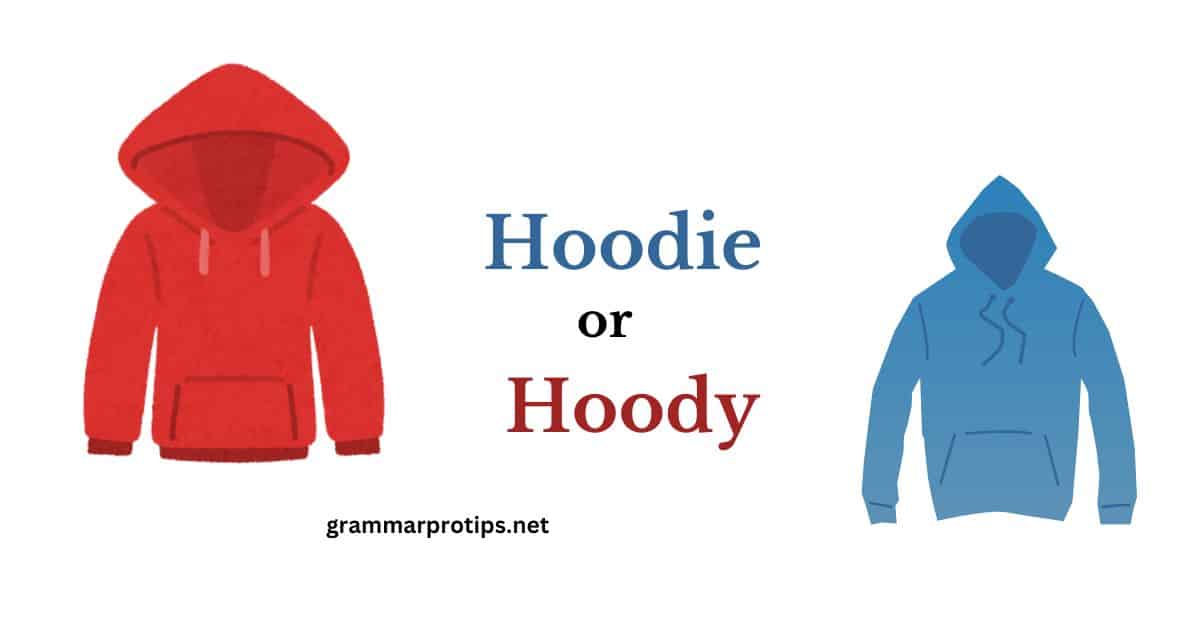When it comes to one of the most beloved and versatile garments the hoodie you’ve probably seen the terms “hoody” and “hoodie” used interchangeably. But have you ever wondered which one is correct?
Is “hoody” a valid alternative, or is “hoodie” the only correct option? Whether you’re writing a casual email, drafting a professional message, or just chatting with friends, knowing the ins and outs of hoody or hoodie will help you decide which spelling is best for your situation.
Origins of the Hoodie
Before diving into the spelling debate, let’s first look at the history of this comfortable clothing item. The hooded sweatshirt, which many people simply call a “hoodie,” traces its origins back to the 1930s in the United States.
Workers in New York City needed a piece of casual sweatshirt clothing that could provide warmth during harsh weather. The result was the sweatshirt with a hood a simple garment designed for comfort and practicality.
Over time, this garment evolved, becoming a symbol of rebellion, comfort, and street style, and eventually, the word “hoodie” entered mainstream use. But was this the only word associated with this popular item of casual wear?
Hoodie vs. Hoody: What’s the Difference?
Both hoody and hoodie refer to the same item a sweatshirt with a hood, often equipped with drawstrings or a kangaroo pocket. The only difference between the two is the spelling.
1. Hoodie or Hoody? Which is Right?
The confusion often arises because of regional variations. American English typically uses “hoodie,” while in British English, “hoody” tends to be more common. But neither spelling is strictly wrong; it’s more a matter of regional preference.
Example in American English:

In the United States, it’s common to see hoodie used across various contexts. For example, Nike produces a variety of hoodies for men and women, emphasizing style and comfort. “I just bought a new Nike hoodie,” a shopper might say.
Example in British English:
In the UK, hoody is more widely accepted. When browsing an online store, a British customer might say:
“I just picked up a cool hoody from the shop.”
2. Hoody vs. Hoodie: The Spelling Debate
The debate over hoody vs. hoodie isn’t just a matter of which one is “right” it’s about cultural and linguistic nuances. While hoodie has become the more globally recognized term, hoody still holds strong in places like the UK and Australia.
In Australian English, you might encounter both variations, though hoodie is gaining popularity due to globalization and the influence of brands like Nike and Adidas, who use the spelling “hoodie” for their custom hoodies.
How Do You Spell Hoodie? Let’s Break It Down
Let’s examine the different contexts in which hoody or hoodie might be used.
Hoodie in Casual Language
In informal contexts, especially when talking to friends, both spellings are generally acceptable, but hoodie is more likely to be used in casual conversations. The plural of hoodie is hoodies. Here’s how you might use it:
Example:
In a message to your friend, Sarah writes:
“I just bought a new hoodie yesterday. Do you want to borrow it?”
Hoodie in Formal Writing
When it comes to formal writing, the spelling hoodie is more likely to be used, especially in contexts like marketing, branding, or customer communications. If you are writing a professional email or business-related content, stick with the more widely accepted spelling, “hoodie.”
Example:
If you’re emailing a potential client to discuss a custom hoodie order, you might write:
“Dear Mr. Smith, Thank you for your interest in our hoodies for men. Please let us know the design you have in mind, and we will get back to you with a quote.”
Hoody or Hoodie? Pronunciation and Pluralization
One of the key differences between hoody vs. hoodie lies in pronunciation. While both terms refer to the same piece of clothing, you might notice that hoody and hoodie are pronounced the same, making the spelling choice purely a matter of regional preference.
Pronunciation: Hoodie or Hoody?
Both “hoodie” and “hoody” are pronounced the same way: /ˈhʊdi/ (hoo-dee). Therefore, even though the spelling might change depending on where you are, the sound remains the same.
Pluralization: Hoodies or Hoodies for Men
In both cases, the plural form of the word is hoodies, regardless of whether you are using “hoody” or “hoodie.”
Example:
If you are discussing a collection of hooded sweatshirts with a friend, you might say:
“I need to buy more hoodies for men. I don’t have enough to get through the week!”
Hoodie vs. Hoody in Writing
It’s important to note that in written forms whether you’re posting on Reddit or writing an email the spelling choice of “hoody” vs “hoodie” can subtly influence the tone of your content.
If you’re communicating in an informal or chatty tone, feel free to use either spelling, especially if you are part of a Reddit community that leans towards one spelling.
For instance, on the Hoody or Hoodie Reddit forum, users often discuss the pronunciation of these words, sometimes giving contextual tips on which one to use depending on location.
Example:
A Reddit user might post:
“I’m looking for a new hoody or hoodie jacket for the winter. What’s your favorite brand?”
Which Spelling is Used in Hoodies for Men and Women’s Fashion?
When it comes to fashion and brand names, hoodie is the most commonly accepted spelling. Fashion brands, especially those like Nike, prefer using “hoodie” in their descriptions of hoodies for men, hoodies for women, or custom hoodies.
Hoodie for Men:
When shopping online for a hoodie for men, you’ll almost always find “hoodie” being used. Here’s a scenario:
Example:
On a popular e-commerce site, the product description reads:
“This premium hoodie for men is made with soft cotton and comes with a kangaroo pocket and drawstrings.”
Hoodie for Women:
The same applies when shopping for hoody or hoodie women’s items. Even though some might write “hoody,” hoodie is generally used in marketing materials, especially for custom hoodies or fashion-forward designs.
Example:
If you’re shopping for a women’s hoodie, the description might read:
“Our new collection of women’s hoodies is designed for comfort and style. Choose your favorite design today.”
Hoodie in Popular Culture and Creepypasta
The hoodie has transcended its status as just a comfortable piece of clothing; it’s now a cultural symbol. In many contexts, particularly Creepypasta or horror fiction, the hoodie represents anonymity and mystery.
Example:
In a Creepypasta story, a character might wear a hoodie to conceal their identity:
“The figure in the hoodie stepped out of the shadows, their face hidden beneath the dark fabric.”
Similarly, when discussing Creepypasta characters like Slenderman, the hoodie becomes part of their iconic aesthetic.
Conclusion: Which One Should You Use?
Ultimately, choosing between “hoody” or “hoodie” boils down to personal preference and the context in which you’re writing. While hoodie is the more widely accepted spelling, hoody still has its place in certain regional dialects and informal settings.
In the world of fashion and branding, hoodie reigns supreme, while hoody can often be seen in British English or Australian English contexts.
In formal writing, it’s safest to use “hoodie,” but in casual language, feel free to lean into whichever spelling feels more comfortable or familiar.
Just remember: whether you spell it hoody or hoodie, you’re talking about the same beloved sweatshirt with a hood, so don’t stress too much about the spelling just enjoy the comfort it brings!

Sienna Mauldon is a passionate writer and grammar expert. On her blog, she shares easy-to-follow guides to help readers master grammar rules and improve their writing. With a love for language and teaching, Sienna makes grammar simple and fun for everyone, from beginners to experienced writers.








